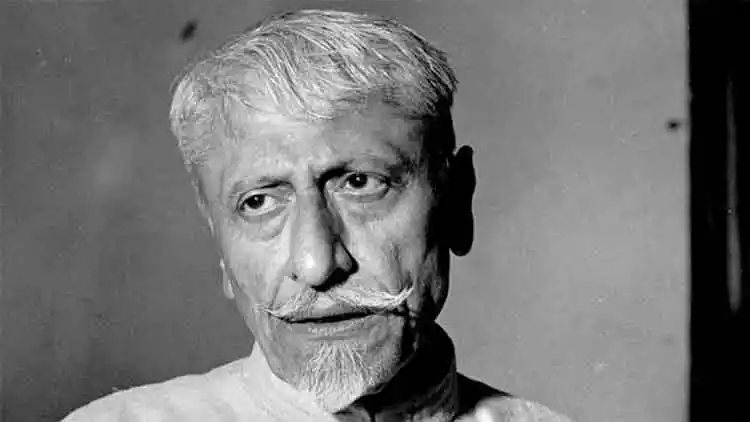
 Saquib Salim
Saquib Salim
Maulana Abul Kalam Azad, the first education minister of free India, is often seen as a follower of Mahatma Gandhi. The man, who served as the President of the Indian National Congress on several occasions and led India into negotiations with the British for freedom, has been mostly projected as an Islamic scholar who believed in non-violence. Many historians have reiterated the allegations of Mohammad Ali Jinnah that Azad was a token Muslim leader of a ‘Hindu’ Congress. Who was real Maulana Azad?
Azad was a visionary, who stood for Islam and India at the same time. He dared to speak the truth to his coreligionists. He was a revolutionary, who was ready to take up arms against the foreign rulers; a statesman, who served the country through constitutional methods. Azad was all of these.
While many aspects of his personality have been explored, the fact that Azad was a revolutionary with a belief in violent means for overthrowing the British, remains untouched. In his words, “My view was that Indians had the right to take to the sword if they wished but in the circumstances which were obtained in the country, Gandhiji's method was right. Our decision to fight non-violently was therefore compelled by circumstances….... If freedom could be obtained by fighting, we would certainly participate in the war.”
In 1905, Azad, in his teens, lived in Kolkata when the Swadeshi movement against the Partition of Bengal rocked the British Empire. He had just completed his studies of Islamic theology, literature, and philosophy and become disillusioned with the orthodoxy prevalent among Muslims. This is when he adopted Azad as his pen name to announce rebellion. He wrote, “It was about this time that I decided to adopt the pen name 'Azad' or 'Free' to indicate that I was no longer tied to my inherited beliefs.” Young Azad could not remain untouched by the political fervour of Bengal at that time.
Jugantar and Anushilan Samiti were leading the armed struggle of Indians in Bengal against the foreign rulers. These organizations had only Hindus as their members. Azad felt that at a time when the nation was waking up to the idea of freedom, Muslims were either silent or collaborating with the British. If Muslims did not change their attitude, Azad warned that history would record, “When India marched towards development and complete freedom, Hindus came with their lives to be sacrificed but Muslims hid deep inside the caves.”
His cry did not go in vain; Muslims did turn up at his call. Azad met Aurobindo Ghosh and joined one of his armed revolutionary groups. Several other Muslims also joined these revolutionary groups. It was the beginning of a new chapter in the Indian Freedom Struggle, now Hindus and Muslims were fighting side by side under the banners of secret revolutionary groups.
Aurobindo, a popular revolutionary, had a deep impact on Azad. A CID report prepared against Azad had reported that he established a Madarsa, Darul Irshad, on the lines of Manicktolla Gita School of Aurobindo Ghosh. The Madarsa was charged with spreading anti-British and nationalist feelings among the Muslim students.
Azad wanted that more and more Muslims should join the freedom struggle. Al-Hilal, an Urdu weekly, was started in 1912 to spread the message of nationalism among Muslims. Soon, its readership grew to 26,000, a very high number in those times. At the same time, Azad organized an armed revolutionary group, Hizbullah. The group had more than 1700 members, who took the oath of fighting till their last breath.
In 1916, three secret letters written on silk cloth were discovered by British intelligence. The letters were the tip of the iceberg and the British came to know of a larger plan to overthrow the empire. In Afghanistan, a provisional government under Raja Mahendra Pratap, Barkatullah, and Ubaidullah Sindhi had been formed. The government was raising an army and had the support of Turkey, Germany, and a few other countries. The plan was to attack the British in India and Azad turned out as one of the masterminds.
Azad raised funds for Ubaidullah’s Afghanistan mission. He was one of the original planners of this mission that frightened the British. The investigation led the British to realise that Azad was running a revolutionary organization, publishing anti-British newspapers and books and preaching nationalism through his institutions. Azad was arrested at Ranchi in 1916. Gandhi and Nehru were yet to arrive on the scene.
Though the plan could not be executed, it brought the Indian Muslims to the forefront of the national struggle. After his release in 1920, Azad met Gandhi and was impressed with the idea of non-violent agitation. The idea was similar to Tolstoy’s method already read by Azad. Azad started believing that Indians couldn’t afford an armed struggle and a non-violent way was the best possible one to freedom.
(Saquib Salim is a writer and a historian)
